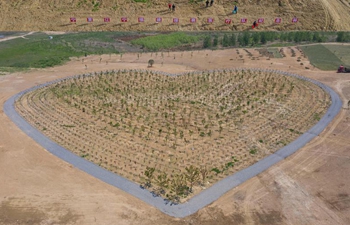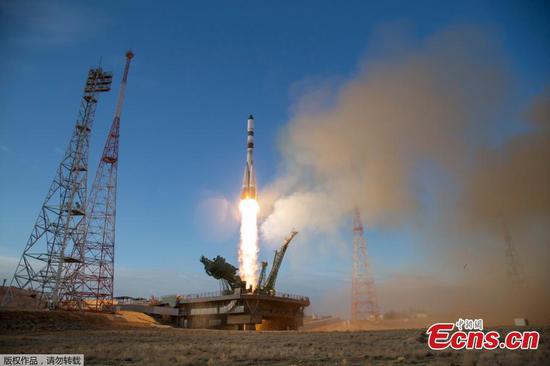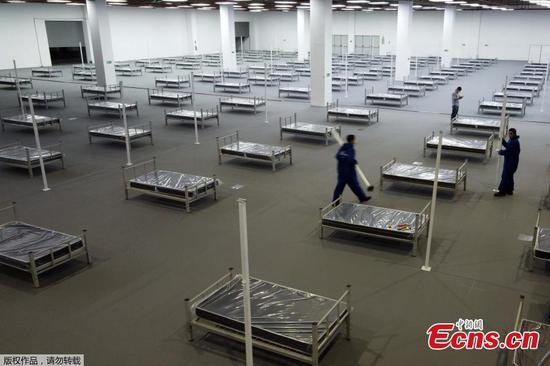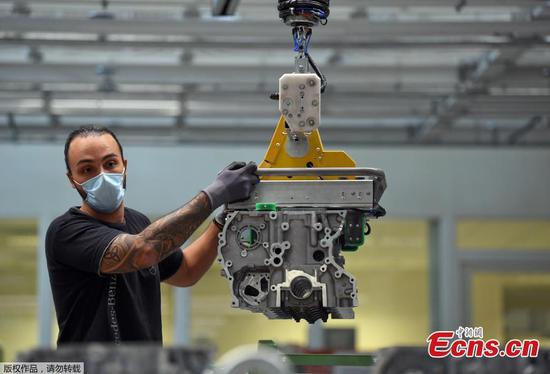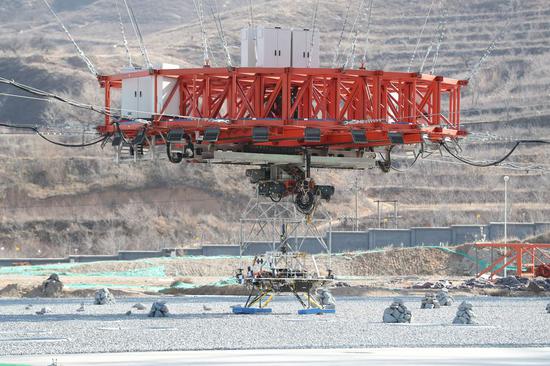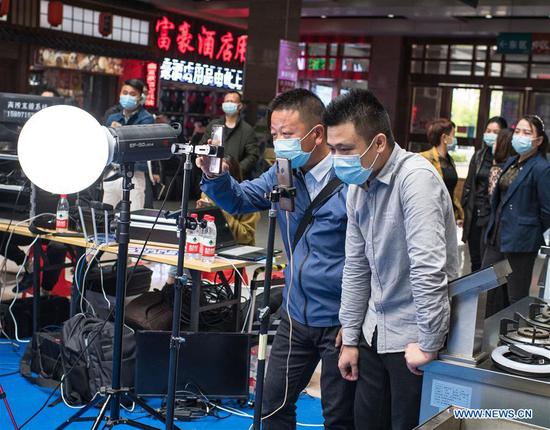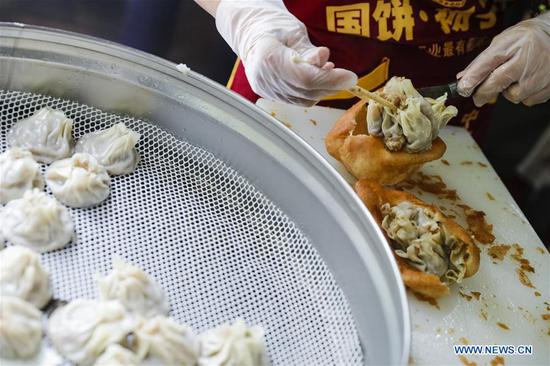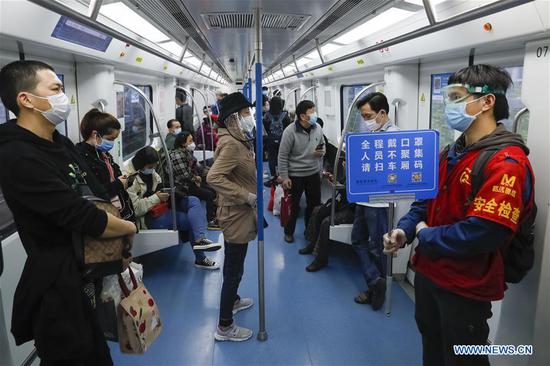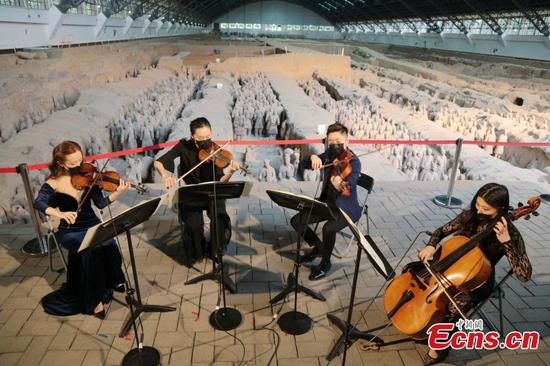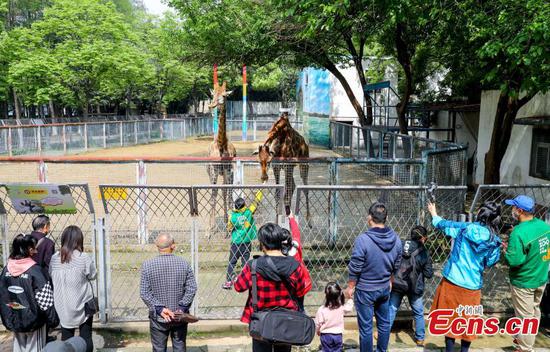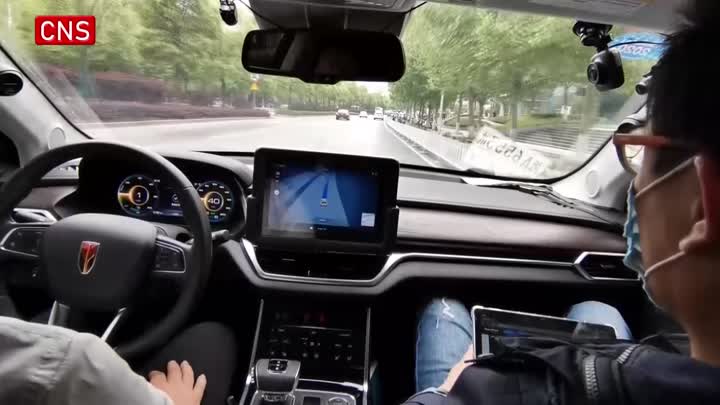Though the number of in-store customers has been curtailed due to COVID-19, shops in the Haining Leather Center in Hangzhou, east China's Zhejiang Province, have seen orders going up by a staggering number, as they drum up their businesses online.
Haining was among the first retail malls in 2018 to smell the potential in the digital marketing strategies brought up by Alibaba, the Chinese e-commerce giant, and the mall's timely response to the latest livestreaming craze has provided a lifeline to retailers crippled by the epidemic.
"Up to 80 percent of the business owners on this floor, for example, are selling products via livestreaming, and sold items often pile up on the floor for delivery every day," said Shen Songying, a merchant in Haining, also an owner of a clothing factory.
Shen said it was not uncommon for her and other sellers to suffer from mounting excess inventory before.
However, things began to turn around right after digital marketing was introduced to boost sales in the mall. "Based on back-end sales data and customer feedback, I now know exactly what products are in vogue so that my production and sale plans are more customer-targeted," said Shen, adding that she does not worry about a collapse in sales during the coronavirus period.
While most customers are trapped at home to prevent the spread of coronavirus, the demand for online shopping has soared, making the digital economy a new driving force in the country's economy.
According to the National Bureau of Statistics, the online retail sales of physical commodities this period nationwide totaled more than 1.85 trillion yuan (about 261.8 billion U.S. dollars), up 5.9 percent year on year, accounting for 23.6 percent of the total retail sales of consumer goods.
Leading Chinese artificial intelligence company Iflytek Co., Ltd. said the demand for online education and telemedicine has surged amid the epidemic. The company has offered online education service to over 15 million students and teachers from more than 6,500 schools across China, said Liu Qingfeng, chairman of Iflytek.
According to Wu Hao, an official with the National Development and Reform Commission, the epidemic made business owners further realize the great benefits brought by digital transformation while technologies such as big data, mobile payment and e-commerce have played essential roles in the resumption of work and business.
Traditional industries have also stepped up efforts to follow the trend. Liuguo Chemical Industry in the city of Tongling, east China's Anhui Province, has used cloud data, internet of things and intelligent algorithms to calculate material usage since 2018 and has stood out among the phosphorus fertilizer compound producers in the industry.
"We now save about 6,000 tonnes of phosphate rocks per year and increased our economic benefits by 6 million yuan," said Ma Jian, general manager of Liuguo.
Figures from the China Academy of Information and Communications Technology (CAICT) showed that the value-added output of China's industrial internet sector will likely reach 3.1 trillion yuan in 2020, accounting for 2.9 percent of gross domestic product.
Meanwhile, policies will be put forward to promote the digital transformation of key industries, and the construction of new digital infrastructure will be sped up to facilitate the development of 5G, data centers and industrial internet, said the Ministry of Industry and Information Technology.
Liu Duo, president of the CAICT, said 5G is crucial for digital transformation in many sectors to boost innovation and underpin the growth of the economy and society.
Figures from the ministry also showed that some 164,000 5G base stations have been established nationwide by the end of February and the coverage of the 5G network will be further expanded with more than 600,000 stations expected to be built across the country by the end of 2020.
With digital facilities as the fresh growth driver, the economy will maintain good momentum, said Niu Nutao, director of the Anhui provincial department of economy and information technology.










